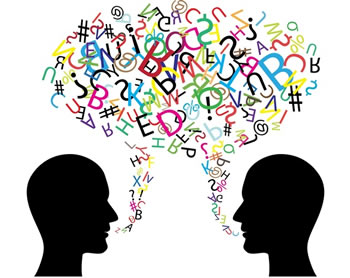Difference between Personal and Impersonal Communication
Key Difference: A personal conversation is with someone who you know intimately and the conversation has a deeper context, while impersonal conversation is with someone who you’ve just met and the conversation is superficial.

We don’t often realize that there are a few different ways that we communicate with someone on a daily basis, from verbal to non-verbal, personal, impersonal, etc. Our communication is not just limited to our words, but also to our tone, voice, body language, and so on. As we delve deeper into the different forms of communication, two of the most confusing forms of communication that often leave people speechless is personal and impersonal. And while we actually do both every day, the terms can be confusing.
Both Impersonal and Personal communication simply describe our level of interaction with the opposite person. The way we interact and the level of acquaintance with the opposite party defines if the type of communication – if it is personal of impersonal.
Personal communication is the type of interaction that you might have with a person that you are fairly acquainted with such as a friend or a colleague or even a relative. These types of conversations are more intimate and include feelings as well a broader context. You know this person and have spent a significant amount of time with them as well you know a bit about their background.
Personal communication is also used in literature to indicate one-on-one communication such as letters, phone calls and face-to-face interviews. This type of communication is often cited in papers as personal communication.
Impersonal communication is the opposite of personal communication. In this type of communication you do not personally know the person you are speaking to. The conversation itself is superficial and not at all detailed. It is often related to a specific context such as the event on hand. You are not at all intimately familiar with the person on the opposite side of the conversation.

This type of conversation is probably with someone who you’ve just met or someone who you will not meet again. An example of an impersonal conversation is asking someone on the train what the next station is.
As you can see, impersonal and personal conversations are quite simple once you understand the concept. A personal conversation is with someone who you know intimately and the conversation has a deeper context, while impersonal conversation is with someone who you’ve just met and the conversation is superficial.
Comparison between Personal and Impersonal Communication:
|
|
Personal Communication |
Impersonal Communication |
|
Definition |
A type of interaction that includes a connection between two or more people. In literature, it is a type of communication that is one-on-one such as letters, phone conversations, etc. |
A type of interaction that is based on superficial roles with conversations based on informal and superficial topics. |
|
Roles |
People are acquainted with each other and share more deeper conversation topics |
People are not acquainted with each other and conversation is general |
|
Context |
Conversation is more detailed |
Conversation is not detailed instead grazes over a subject |
|
Treatment |
Person is treated as a friend or a close confidant |
Person is treated as an acquaintance |
|
Dialogue |
Dialogue is more expressive |
Dialogue is less expressive |
|
Feelings |
Feelings are involved |
Feelings are not involved |
|
Examples |
Discussing a problematic situation with a friend or a parent |
Conversation between a sales clerk and a customer |
Reference: Business Dictionary, Healing a Relationship, North Seattle Community College, Quora, Reference.com, University of Canterbury Image Courtesy: huffingtonpost.com, fool.com









Add new comment